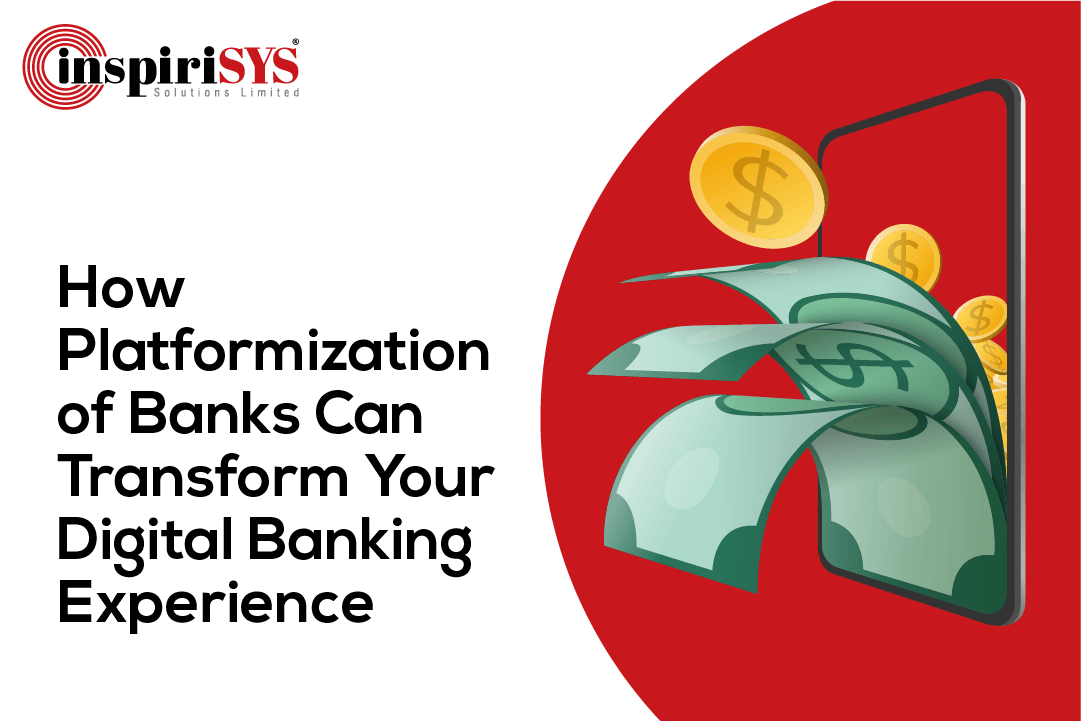There has been a great shift in customer expectations across sectors, especially in the world of banking. In a constantly evolving business environment, innovation isn’t merely about long-term success – it’s a matter of survival. Until very recently, if customers required assistance in financial services or to make transactions, they’d have to visit the bank in person. The emergence of net banking and cashless, mobile transactions have ensured that customers can carry out all their transactions at the click of a button.
Customers expect rapid and timely services that they can access through different delivery models. Flexibility and convenience are the watchwords of the digital age. Keeping this in mind, banks need to re-evaluate their operational structures and invest in innovation.
Banks and other large financial institutions need to adopt sophisticated digital systems that can minimize their dependencies on manual labour, reduce their operational costs and turnaround times. No financial institution can function optimally without embracing modern digital technologies. This blog talks about how having a digital banking platform can add another dimension to the banking experience.
The Need for Platform Banking
Seeking ways to handle enormous volumes of banking transactions while preventing outages and downtimes is the only way financial institutions can hope to stay relevant in the current business climate.
The pandemic impacted the banking sector heavily. Closure of bank branches and reduction in staff capacity made it extremely challenging for people to access vital services – a problem which intensified in emerging markets. It also exposed the shortcomings and lack of innovation across the industry. Banks cannot hope to meet rapidly evolving customer expectations, streamline their internal process, or maintain market share without creating room for innovation.
Digital technology is the best option for banks to handle their transactions effectively. However, even some of the largest banks use obsolete legacy systems in their day-to-day operations. With digital technology improving in leaps and bounds, these systems appear to be comparatively primitive and lack flexibility.
With RBI recently allowing private players in the banking industry to play the role of Government business agencies, there has been a sudden surge in the market to cater to the needs of elite customers in these private institutions. These customers are looking to process direct taxes in bulk through a digitally advanced platform.
Digital platforms can make huge waves in the banking and financial sectors. Whether it comes to restructuring business models, pricing, or customer behaviour, digital transformation is at the heart of these changes. Customers stand to benefit in many ways – greater convenience, flexibility, product comparison and better pricing to name a few.
What Does Platform Banking Involve?

The term ‘Platform Banking’ is used to describe a digital marketplace that enables banking and potentially non-banking services. Platform Banking is set to play a pivotal role in the years to come in the financial sector. It may also expand to include products and services outside the scope of banking, as is the case with Paytm. Though Paytm is primarily an eCommerce payment system, it has grown in scope to include an online marketplace where customers can buy travel tickets, make hotel reservations, rent vehicles, and more. At the surface level, the concept of Platform Banking may seem like an esoteric concept. However, in the coming years, these services are set to undergo a meteoric rise in adoption all over the world.
Advantages of Digital Banking Platforms

Now that you have a clearer idea of what Platform Banking entails, here are some benefits that digital banking platforms can offer:
Convenience – Digital banking has largely eliminated the need for people to visit banks merely to transfer funds. Today, people can save time and money by not having to travel to a bank. It has become highly convenient especially for professionals and business people to carry out day-to-day transactions from the comfort of their workplaces or homes, at their convenience.
Intuitive Features – The online banking experience is enriched by the availability of numerous features. Banks can offer financial advice, savings tools, purchase calculators, and virtual assistants to guide customers on the best course of action. Digital banking has also been instrumental in enabling eCommerce sales, as customers can freely purchase goods and services and pay for them instantly. Finding ways to prioritize and enhance the human element in digital channels is the way forward for digital banking platforms.
Updates – In the past, banking notifications had to be carefully recorded on paper or a calendar. Today, customers can instantly receive alerts for dues and payments through apps and emails. They can promptly clear their outstanding bills and avoid penalties. Payments can also be automated to avoid missing due dates, and utility bills paid at the click of a button.
Security – While cyberthreats are rising in frequency all over the globe, banks make it easy to adopt extra security precautions. You can add multi-factor authentication to your online bank accounts and mobile applications. Biometric authentication can also be requested to log in – this may be in the form of fingerprint, voice recognition, or facial recognition. Additional verification should be made mandatory in case an unknown device requests access or logs in.
Control – Digital banking enables its users to exercise a higher level of control over their finances, as they can access, manage, and transfer their money as they see fit, in real-time. Unlike in-person banking, banking apps and websites have minimal restrictions when it comes to performing tasks such as depositing cheques or transferring money between accounts. The world of technology is offering customers the opportunity to navigate daily transactions in ways that are far simpler than in the past. Banks are striving to offer more of their services online, to provide greater customer satisfaction and reduce the workload on physical banks. Credit and debit cards can now be activated through your favourite banking app.
Conclusion
Digital Banking Systems are the future as they allow far more flexibility and responsiveness than the traditional system. Modern banking solutions enable a fully digital customer journey, while generating valuable, real-time data streams and key analytics.
The shift of the financial industry towards digitization means that banks and financial institutions will need to employ expert solutions to stay agile and competitive. Inspirisys’ deep domain expertise in digital banking products and solutions has helped leading global financial institutions meet and exceed their business goals. With solutions offered across 30 countries and over 150 clients, Inspirisys’ best-in-class banking solutions and services meet local regulation compliances and provide seamless customer experiences. Our deep technical capabilities provide solutions across emerging technologies including RPA, Digital Kiosks, AI and BI among others. Get in touch with us to transform your digital experience and boost conversion rates.







